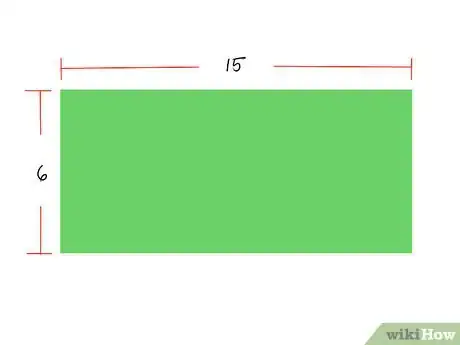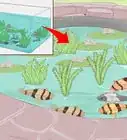This article was co-authored by Clark Hill. Clark Hill is a Plant Specialist and the Vice President of Operations at Platt Hill Nursery, a garden center and nursery based in the Chicagoland area of Illinois. Clark and the Platt Hill Nursery plant experts are committed to educating others about plants and providing advice to plant owners. Platt Hill Nursery aims to make gardening an easy and sustainable activity for everybody.
This article has been viewed 25,883 times.
A perennial garden, properly designed, can provide lasting pleasure to any gardener. While a planned garden is certainly aesthetically pleasing, it is also environmentally advantageous because it provides a habitat and haven for birds and bees. The steps below outline how to design a perennial garden that is easy to maintain and relatively easy to create, even if you are a novice gardener.
Steps
-
1Start small. Design a garden that will fit in a space that is no larger than 15’ (4,572 mm) wide x 6’ (1828 mm) deep. That’s enough room to create a 3 season garden and it won’t be an overwhelming chore to maintain it. The initial planning and preparation of a perennial garden is labor intensive; if you attempt to design and plant a large garden, you might get discouraged, both with the planting and the maintenance.
-
2Choose the ideal garden spot. Walk around your property and observe the places where you spend the most time, or would like to spend the most time when you are outdoors. You can also walk through your house and look out of all the windows and decide where you would like to improve the view.Advertisement
-
3Sketch a simple map of the location you have chosen. Note the locations of large trees or shrubs and the average amount of sun and shade the spot gets every day.
-
4Research types of perennials and decide how much time you are willing to devote to the care and maintenance of any plants you are considering. Some perennials are virtually maintenance-free once established, but others require diligent, sometimes daily, attention. Still others require full sunlight or partial shade. Look online or find books at your local library or book store that have full color photographs of perennials.
-
5Think about other elements you can incorporate into your garden. Don’t reject a favorite site because it has a large boulder or tree that can’t be moved; you can easily plant flowers that will complement natural elements.
-
6Consider spacing when you are researching the plants you’d like to put in your garden; many perennials multiply by themselves, so if you initially plant in every available space, your garden will soon be overcrowded. Fill in any gaps with annuals so that you allow your perennials room to expand over the years.
-
7Plant groups of similar plants together. A minimum of 3 similar plants or a group of a single variety of flowers gives the maximum eye appeal.
-
8Note the growing heights of the plants you are considering. Taller plants should be planted in the background and lower growing flowers should be in the foreground. Sketching out your choices on your design plan will help you visualize what your mature garden will eventually look like.
-
9Choose perennials that have a mixture of colors, shapes and foliage.
-
10Factor in the blooming times of each perennial you want; that way you will have a colorful garden from spring until fall.
-
11Make sure your new perennial garden can be easily reached with a garden hose.
Warnings
- Buildings will bounce back heat and light. If you plant too close the south or west sides of buildings, the extra heat and light can hurt the foliage plants.⧼thumbs_response⧽
- Make sure your soil is well-spaded and that it has organic matter worked into it before you start planting.⧼thumbs_response⧽
Things You’ll Need
- Sketchpad or paper
- Pencil
References
- ↑ Clark Hill. Plant Specialist & VP of Operations, Platt Hill Nursery.
- ↑ Clark Hill. Plant Specialist & VP of Operations, Platt Hill Nursery.
- Jeff and Marilyn Cox, The Perennial Garden: Color Harmonies through the Seasons, (Emmaus, PA: Rodale Press, 1985)
- http://web.extension.illinois.edu/gardendesign/

































































